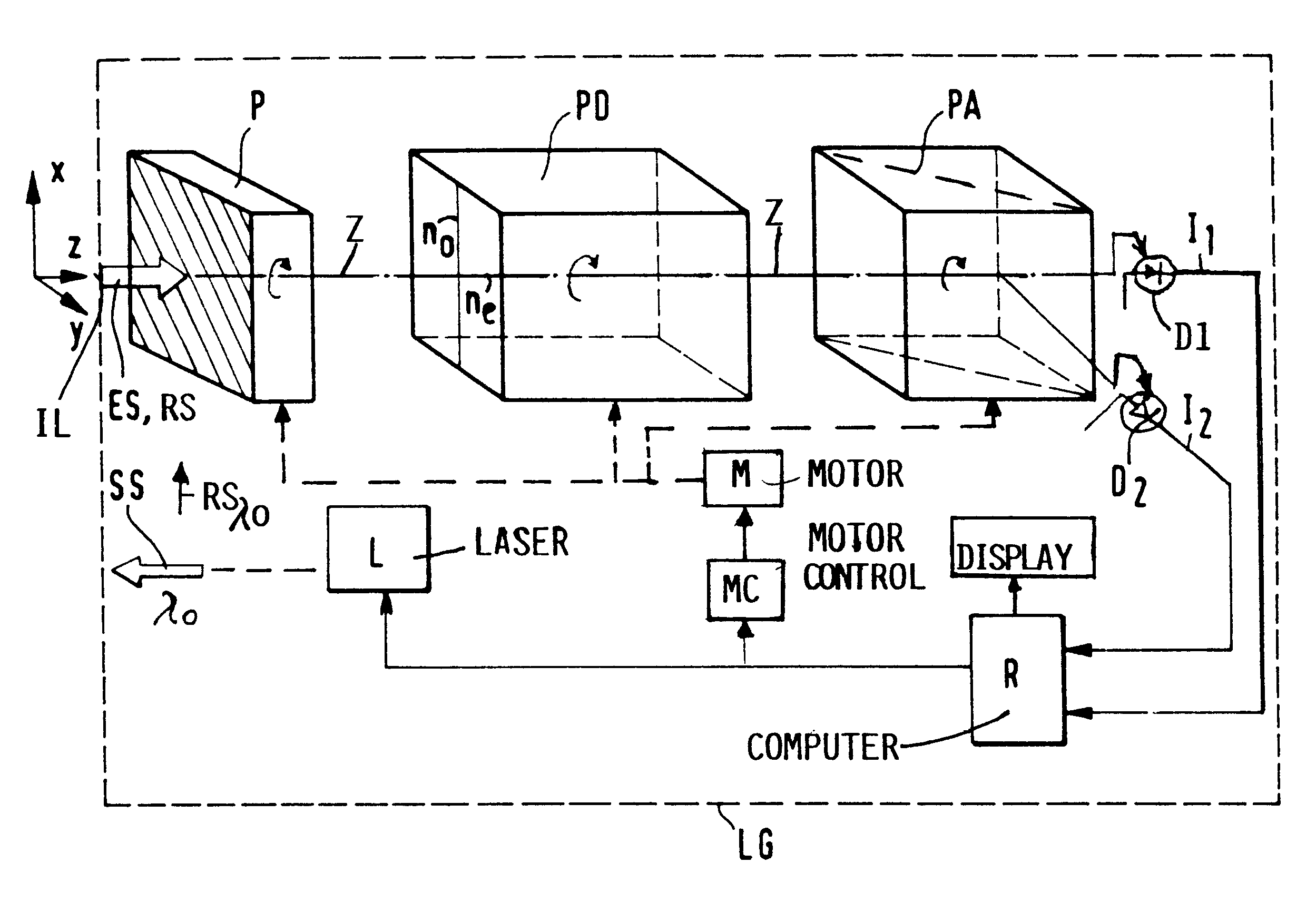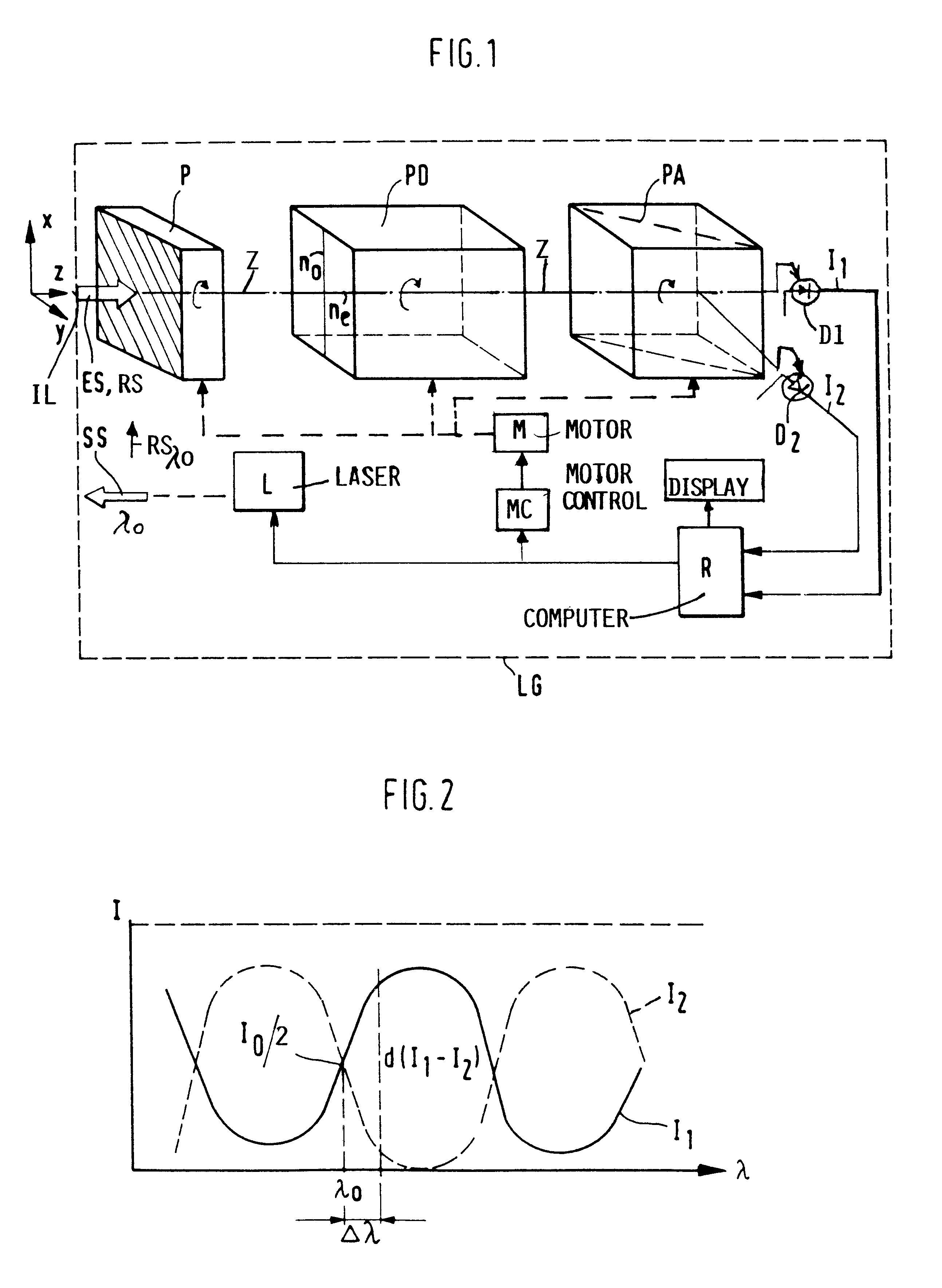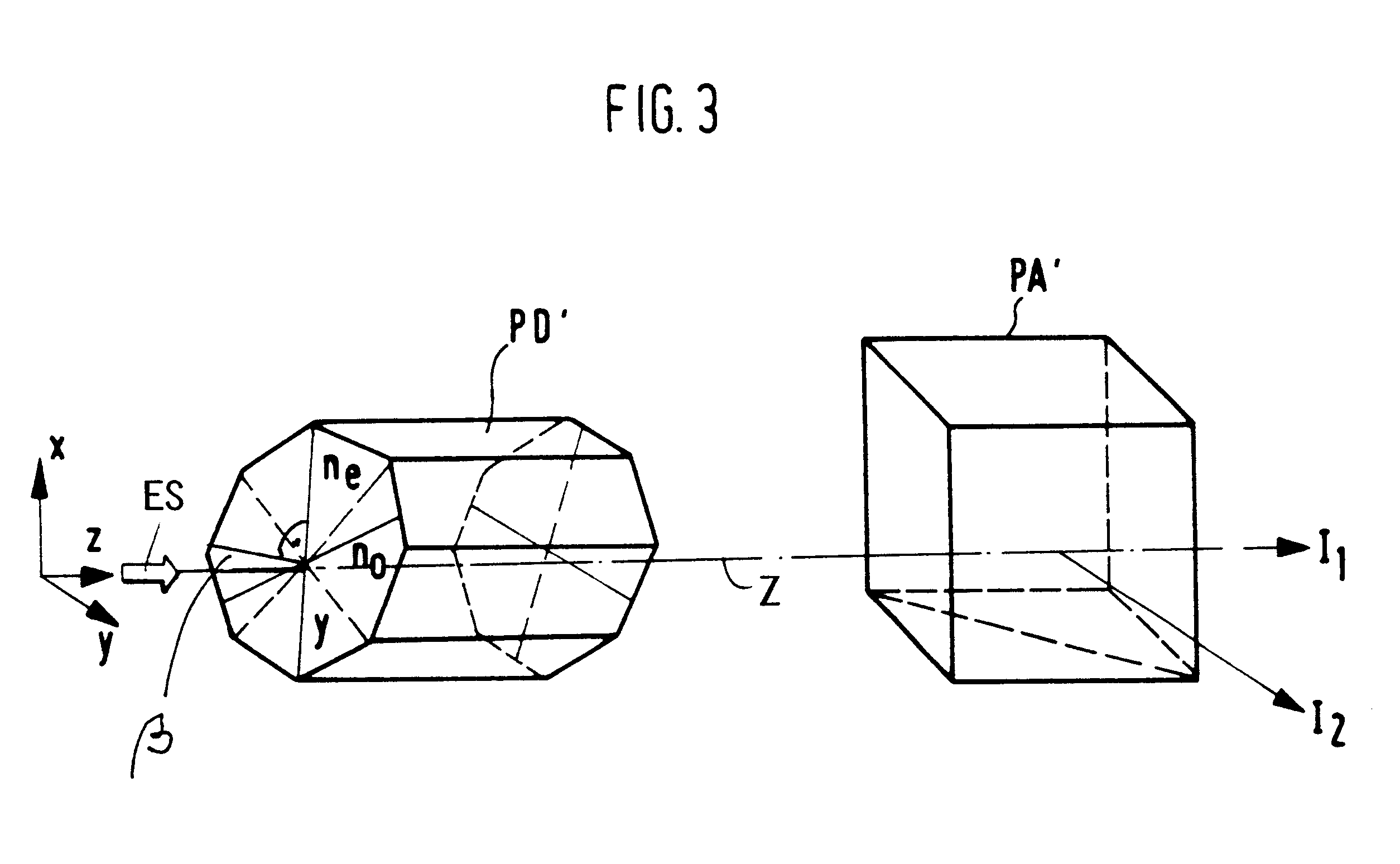Method and apparatus for determining a velocity
a velocity and velocity technology, applied in the direction of optical radiation measurement, instruments, spectrophotometry/monochromators, etc., can solve the problems of disturbance of coherence condition, inability to meet coherence condition, and inability to align and focus beams, so as to avoid signal dissipation or loss, reduce the requirement for optical quality of components, and avoid the effect of signal loss
- Summary
- Abstract
- Description
- Claims
- Application Information
AI Technical Summary
Benefits of technology
Problems solved by technology
Method used
Image
Examples
Embodiment Construction
FIG. 1 shows schematically an example embodiment of a velocity measuring apparatus LG by determining the Doppler shift of a backscattered or received laser beam E5, based on a change in the polarization state of the backscattered beam and taking polarization intensity differences into account. A laser beam SS is emitted by a laser L, such as a lidar toward a target. The emitted beam SS has a wavelength .lambda..sub.0. When backscattered or reflected from moving objects, such as air molecules or aerosols, the wavelength of the backscattered beam ES is subject to a Doppler shift .+-..DELTA..lambda.. The backscattered beam ES, preferably, but not necessarily, first passes through a polarizer P in the direction of a Z-axis which is oriented in the direction of propagation of the backscattered beam ES. The beam or radiation ES, which enters a optical inlet IL of the apparatus LG, is linearly polarized by the polarizer P at an angle of 45.degree. to an X-axis and to a Y-axis of the X-Y-Z-...
PUM
 Login to View More
Login to View More Abstract
Description
Claims
Application Information
 Login to View More
Login to View More - R&D
- Intellectual Property
- Life Sciences
- Materials
- Tech Scout
- Unparalleled Data Quality
- Higher Quality Content
- 60% Fewer Hallucinations
Browse by: Latest US Patents, China's latest patents, Technical Efficacy Thesaurus, Application Domain, Technology Topic, Popular Technical Reports.
© 2025 PatSnap. All rights reserved.Legal|Privacy policy|Modern Slavery Act Transparency Statement|Sitemap|About US| Contact US: help@patsnap.com



